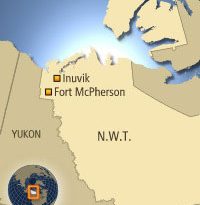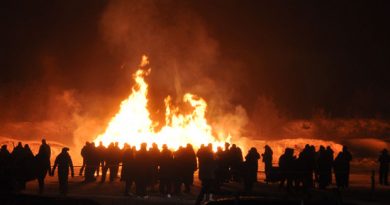Report looks at Alaska’s violent crime trends from 1980 to 2012

The University of Anchorage Alaska’s Justice Center has compiled 32 years of violent crime arrest data statewide, showing some notable trends in how violent crime arrests have fluctuated — and in some cases, stayed the same — since 1980.
The fact sheet was released on the UAA Justice Center’s blog. Although dated December 2013, the data was released behind schedule, wrote Khristy Parker, the study’s author and a research professional at the Alaska Justice Statistical Analysis Center.
The fact sheet relies on data from the Alaska Department of Public Safety’s annual report for statistics. It looks at arrest rates for four violent offenses: murder and manslaughter — referred to collectively as homicide — rape, robbery and aggravated assault.
The study also notes that due to Alaska’s small population, small differences in the number of reported arrests can lead to substantial changes in arrest rates. Arrest rates are defined as a percentage of the number of arrests per 100,000 people.
Aggravated assaults
Parker wrote that her biggest takeaway from the report is that most violent crimes in Alaska are related to aggravated assaults, which result in severe or aggravated bodily injury and usually involve a weapon. “While the level of aggravated assault arrests has stayed fairly stable over the time period, the proportion of all violent crime arrests represented by aggravated assaults is staggering …What causes these higher arrest rates is an interesting research question that has yet to be answered,” she wrote.
She also noted the racial disparity in arrests in 2012 — in which some populations were over-represented in violent crime arrests. Violent crime arrests by race, age and sex were available for the year 2012, and are noted below.
Overall, violent crime arrests peaked in 2009, when the arrest rate for robbery increased, along with the number of aggravated assaults, Parker wrote. Aggravated assaults accounted for nearly 82 percent of all violent crime arrests in 2012, though the arrest rates for such assaults remained largely steady from 1980-2012, increasing by less than 1 percent.
Some of the other notable points from the study:
• The number of violent crime arrests increased between 1980 and 2012, and overall, violent crime arrests increased faster than population growth.
• Homicide and rape arrests decreased significantly between 1980 and 2012. Homicide and rape arrest rates peaked in 1983, with 9.4 homicide arrests per 100,000 people, and nearly 37 rape arrests per 100,000 people. In 2012, homicide rates had dropped 73 percent from the peak year, and rape arrest rates dropped 66 percent.
• By contrast, the arrest rate for robbery climbed nearly 29 percent between 1980 and 2012.
• Aggravated assault and robbery accounted for 93.7 percent of all violent crime from 1980-2012.
• Males comprised the overwhelming number of violent crime arrests in 2012. Males accounted for 100 percent of rape arrests, 84 percent of homicide arrests, nearly 80 percent of robbery and 79 percent of aggravated assault arrests. The report noted that “The FBI’s Uniform Crime Reporting (UCR) Program in 2012 used the definition of forcible rape as ‘the carnal knowledge of a female forcibly and against her will.’ By this definition, rape is almost exclusively attributed to male offenders.” A different definition is being used for 2013 statistics.
• People less than 35 years old were responsible for the majority of arrests for all violent crime categories in 2012 — including 63 percent of the homicides, 62 percent of the rapes, and 81 percent of the robberies.
• In terms of race, Alaska Native/ or American Indian and white individuals had the highest arrest rates in 2012.
• Compared to a proportion of overall population, whites were under-represented in every arrest category in 2012, while Alaska Natives/American Indians and blacks were over-represented.
For a more detailed analysis, see the full report.
Contact Laurel Andrews at laurel@alaskadispatch.com or on Google+
Related Links:
Canada: Domestic violence deaths preventable says coroner in Canada’s Northwest Territories, CBC News
Sweden: Nordics report high abuse levels against women, Radio Sweden
United States: Alaska’s women speak up about violence, abuse, Alaska Dispatch



